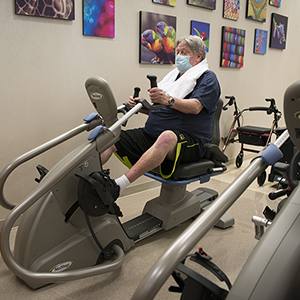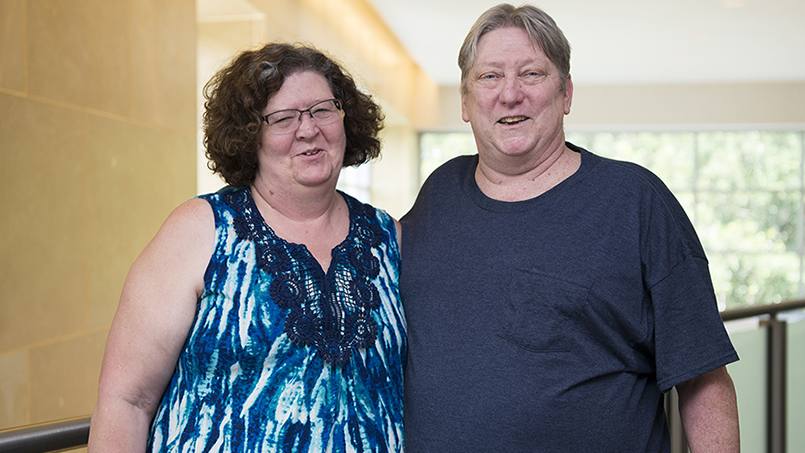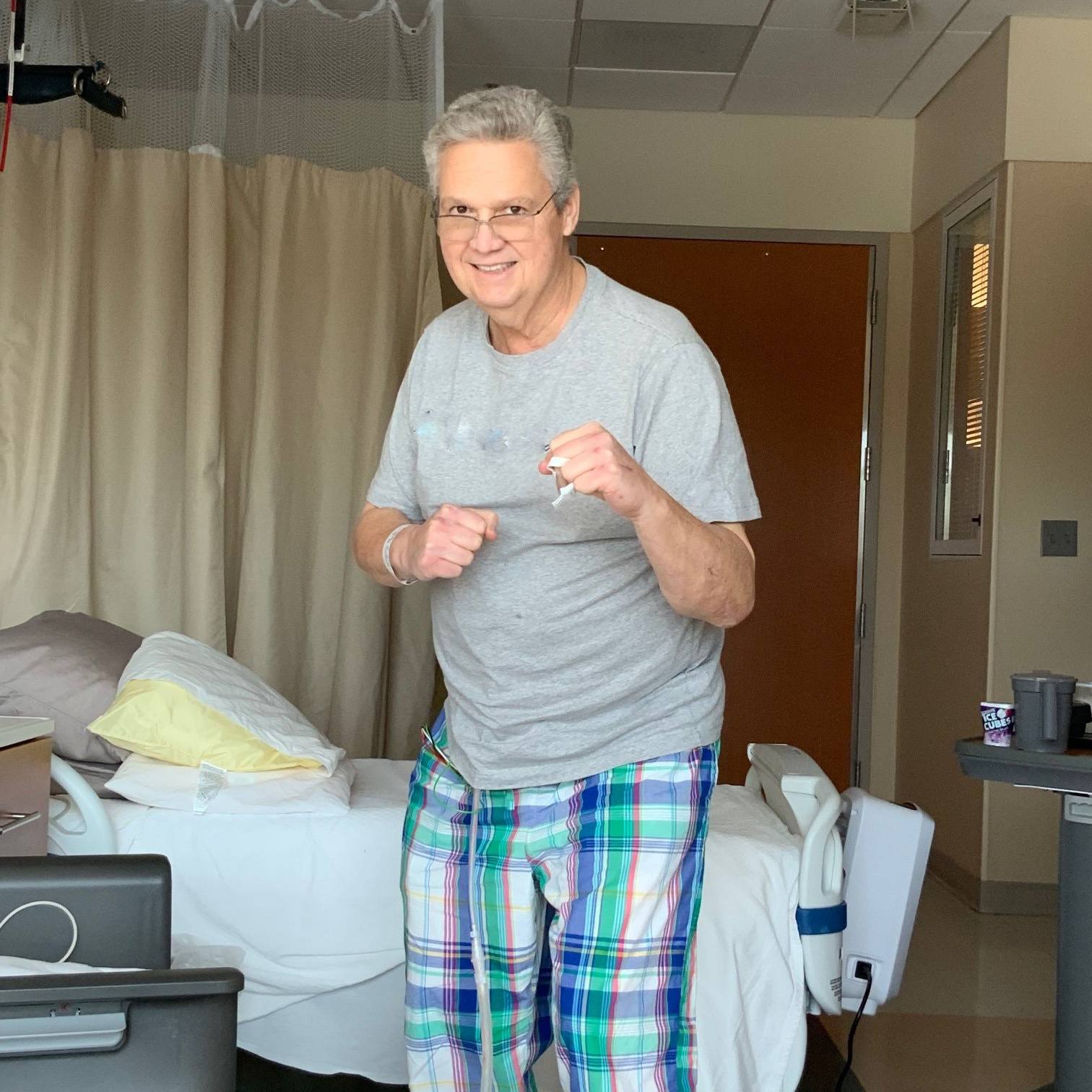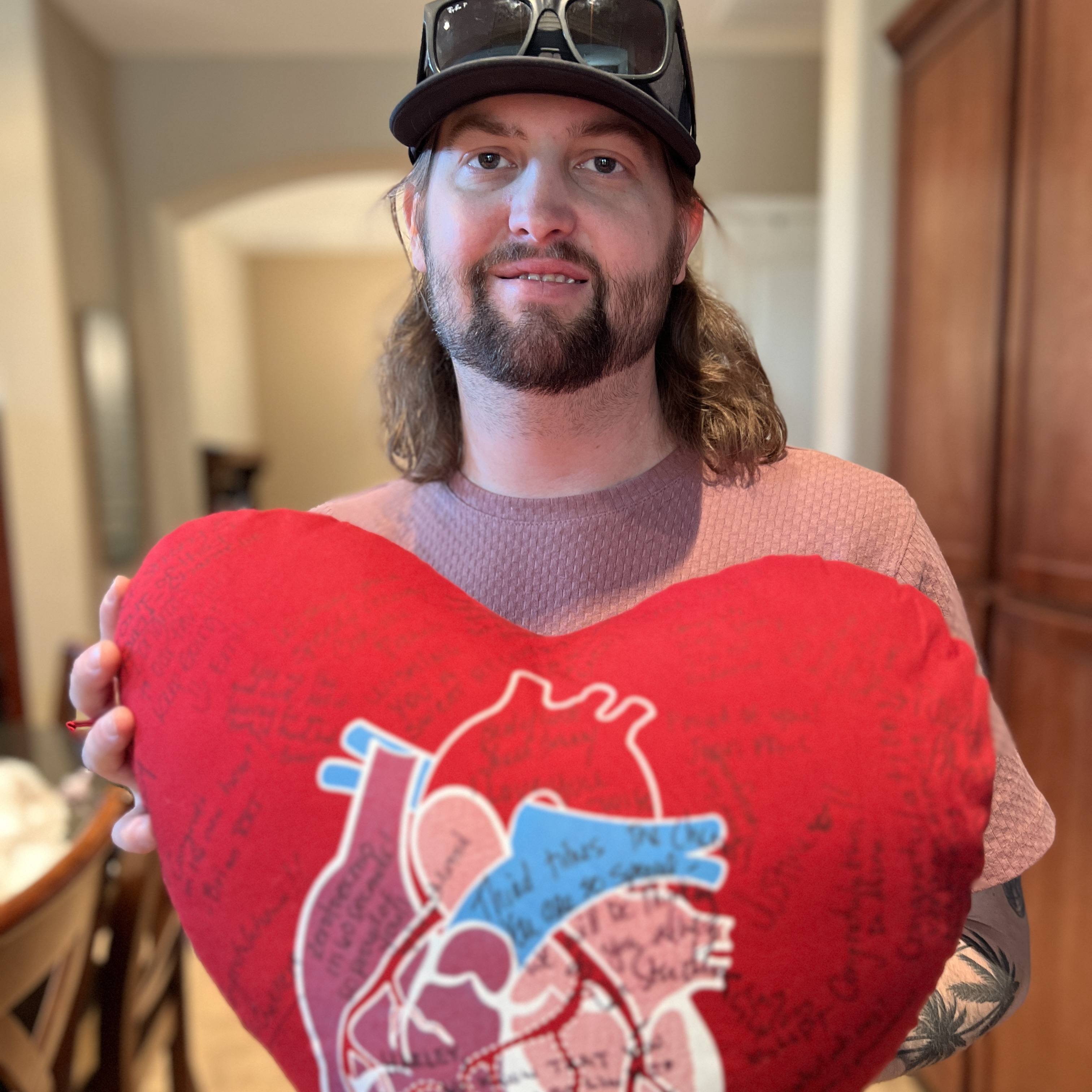When congestive heart failure led to the need for a heart transplant, Vincent Arnold turned to Mayo Clinic. The care he received took all his medical concerns into account, providing him a way to return to better health.
It's been almost four years since Vincent Arnold began feeling winded and feeling like his heart was skipping beats. Although the symptoms concerned him, never did Vincent anticipate they would be the beginning of the journey to a heart transplant — or that his wife's employer would be the catalyst for him to get treatment at a center of excellence.
To learn more about what might be causing Vincent's symptoms, he and his wife, Roxanne, visited a hospital near their home in Winchester, Virginia. Physicians diagnosed Vincent with congestive heart failure as result of a virus.
He was prescribed medications to help improve his left ventricular ejection fraction — the percentage of blood the heart squeezes back out to the body with each contraction. Normal ejection fraction is 55 to 65 percent. At the time of his diagnosis, Vincent's measured only 15 percent. Within 10 months of starting medication, his heart function had improved to 45 percent.
A year later, though, Vincent was back in the hospital with an ejection fraction of 15 percent once again. Not only that, but due to fluid retention, his lungs filled with fluid when he lay down.
"My local doctor said, 'We've done all we can do. You need a new heart,'" Vincent says. "I felt like giving up. The only thing stopping me was 37 years of marriage."
A bridge to transplant
When one of Roxanne's colleagues called to check on Vincent, she was reminded that her employer's insurance program gave the Arnolds access to Mayo Clinic, the largest integrated center for transplantation in the United States. Vincent had his first consult with Parag Patel, M.D., a transplant cardiologist at Mayo Clinic's Florida campus, on Feb. 15, 2015.
By that time, Vincent's ejection fraction had dropped to 11 percent. Dr. Patel said Vincent might not survive the wait for a heart transplant and suggested a ventricular assist device, or VAD. The mechanical heart pump would help Vincent live until they could find him a donor heart. The device would be surgically implanted in his chest to help pump blood from his heart's left ventricle to the rest of the body.
"I was able to walk without having to catch my breath. I could go out and socialize without being tired. And I went back to driving." — Vincent Arnold
In mid-May of that year, Vincent received the ventricular assist device and was added to the transplant waiting list. He also began four months of cardiopulmonary rehabilitation. Roxanne recalls that her husband bounced back nicely.
"He did really well. He was full of energy. It was like night and day," Roxanne says.
"I was able to walk without having to catch my breath," Vincent says. "I could go out and socialize without being tired. And I went back to driving,"
Taking on an added obstacle
 Before getting the VAD device implanted, Vincent, who is 5'10", weighed 237 pounds. But he began gaining weight after the surgery. Over the next 15 months, he gained almost 50 pounds.
Before getting the VAD device implanted, Vincent, who is 5'10", weighed 237 pounds. But he began gaining weight after the surgery. Over the next 15 months, he gained almost 50 pounds.
"I was getting short winded just walking to appointments," Vincent says. "The more weight I gained, the worse I felt."
Transplant cardiologist Juan Carlos Leoni Moreno, M.D., advised Vincent that he was ineligible for a transplant based on his current weight. He would need to lose significant weight and reduce his body mass index, also called BMI, from 39 to less than 35. A normal range is between 18.5 and 24.9.
"We don't transplant patients with a BMI of 35 or higher because there is established data that correlates a higher BMI with increased complications post-transplant," Dr. Leoni says. "These patients have more difficulty controlling their sugars, which is correlated with poor wound healing. Losing weight is critical to improve the success of the transplant."
Knowing that most people have difficulty losing weight on their own and that Vincent would not survive without a new heart, Dr. Leoni turned to the collaborative model of care that Mayo Clinic is known for and reached out to colleagues in Gastroenterology, including Victoria Gomez, M.D.
Surgery is risky for patients like Vincent who need blood thinners because they have a ventricular assist device. That's why Dr. Gomez suggested Vincent consider an intragastric balloon, a saline-filled silicone balloon the size of a grapefruit that's placed in the stomach to limit food intake. The balloon is placed using an endoscope, so no incision is necessary.
"We tried to find a solution that fit the patient," Dr. Leoni says. "This procedure did not require taking Mr. Arnold off the blood-thinning medication."
"I love the team approach at Mayo," says Vincent. "There's so much communication between the doctors. They don't leave any stone unturned."
"I love the team approach at Mayo. There's so much communication between the doctors. They don't leave any stone unturned." — Vincent Arnold
Vincent had the balloon placed in September 2016. The plan was to leave it in place for six months and then remove it.
Roxanne recalls being pleased with the care and connection that Dr. Gomez provided throughout the process. "She's an amazing person with a wonderful personality," Roxanne says. "She called every day to see how Vincent was doing."
The balloon was beneficial. Vincent began to lose weight. He worked with a nutritionist who encouraged him to keep a log of each meal with details about its calories, sodium, protein and carbohydrate content.
"The balloon changed my eating habits," Vincent says. "After I got back down to a normal weight, I felt a lot better about myself."
When the balloon was removed in March, Vincent had lost 42 pounds. His BMI went from 39 to 34. Those numbers made him eligible once again to be placed on the transplant waiting list.
Another chance at better health
Although the average wait time for a heart at Mayo Clinic's Florida campus is about 15 months, Vincent got a call that a suitable donor heart was available less than three months later, just before midnight on May 10, 2017.
The transplant was a success. Today, Vincent says he loves having a second chance, and he continues to make healthier choices.
"I've learned a lot about myself, my heart condition and how to be healthy. I exercise six days a week now. I have a life again." — Vincent Arnold
"I've learned a lot about myself, my heart condition and how to be healthy," Vincent says. "I exercise six days a week now."
And he's getting back to doing things he enjoys.
"I have a life again," he says. "I can spend time with my kids and grandkids. I can travel and be more like I was when I was younger. This experience gives me the hope and the attitude that there's nothing I can't do if I put my right foot forward."
HELPFUL LINKS
- Learn more about heart transplants and ventricular assist devices.
- Read about the Mayo Clinic Transplant Center.
- Consider becoming an organ donor.
- Connect with others talking about Heart Transplant on Mayo Clinic Connect.
- Explore Mayo Clinic's Florida campus.
- Request an appointment.








